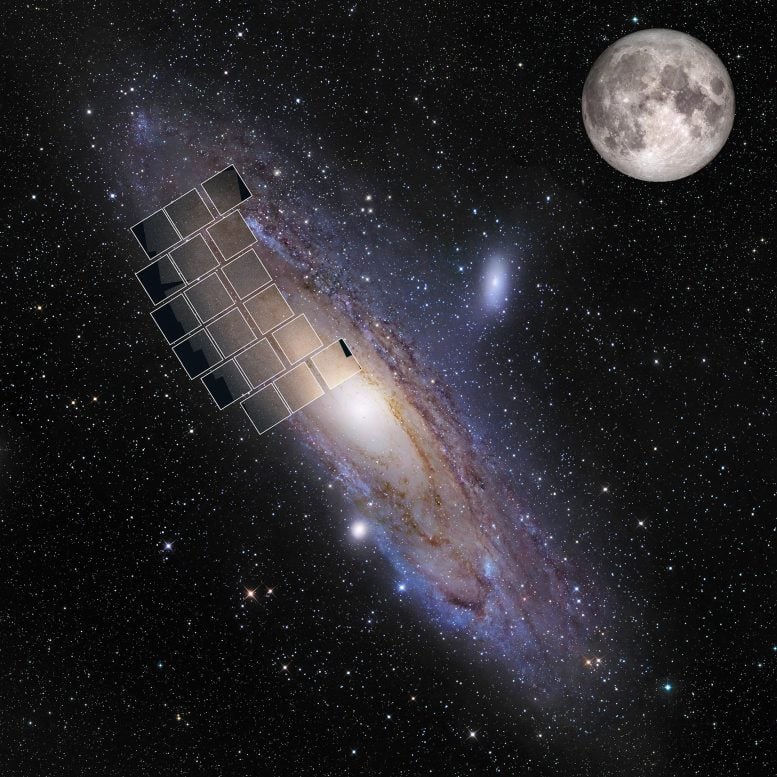Sometimes, stars can be stripped away from globular clusters as they orbit a massive galaxy. Researchers have identified several instances in our own Milky Way galaxy – and they’ve also spotted gaps between these looping tendrils. What caused those gaps? One possibility: a substance known as dark matter. Following the launch of the Nancy Grace Roman Space Telescope, astronomers will use its vast, high-definition images to spot many more tidal streams – and potentially their accompanying gaps – in nearby galaxies for the first time. A prime candidate is our neighbor, the Andromeda galaxy, which appears in the illustration above. Soon, not only will researchers be able to identify tidal streams in Andromeda, they may also be able to use Roman’s fine resolution to pinpoint more properties of this mysterious substance. Credit: NASA, Joseph Olmsted (STScI)

The vast footprint of the upcoming Nancy Grace Roman Space Telescope’s Wide Field Instrument shows how much its camera could observe in a single image. (The Wide Field Instrument has 18 square detectors.) Within this footprint is a simulated Roman image. The background is a ground-based image of the main disk of the Andromeda galaxy from the Digitized Sky Survey. A photo of the full Moon from NASA’s Lunar Reconnaissance Orbiter is provided for scale. Andromeda has a diameter of about 3 degrees on the sky, while the Moon is about 0.5 degrees across. (In reality, the Moon is much smaller than Andromeda, but it is also a lot closer.) The Wide Field Instrument’s footprint captures 0.28 square degrees of the sky in a single shot. Andromeda is a spiral galaxy that is similar in size and structure to our Milky Way galaxy, but is more massive. It is located approximately 2.5 million light-years from Earth. Credit: Image: NASA, NASA-GSFC, ASU, Robert Gendler DSS; Simulation: NASA, STScI, Benjamin F. Williams (UWashington)
“Roman will be able to take a huge snapshot of the Andromeda galaxy, which simply isn’t possible with any other telescope,” shared Christian Aganze, the lead author of a recent High Latitude Wide Area Survey.
Starkenburg will also help lay the groundwork for this investigation through her contributions to another project recently selected for funding by NASA’s Nancy Grace Roman Space Telescope Research and Support Participation Opportunities program. “This team plans to model how globular clusters form into stellar streams by developing a much more detailed theoretical framework,” she explained. “We’ll go on to predict where globular clusters that form streams originated and whether these streams will be observable with Roman.”
Aganze is also excited about other projects currently or soon coming online. “The DOI: 10.3847/1538-4357/ad159c
The Nancy Grace Roman Space Telescope, named in honor of NASA’s first chief astronomer and a pivotal figure in the development of the Hubble Space Telescope, represents a significant advance in space-based observatories. Scheduled for launch in the mid-2020s, this telescope is designed to explore a wide range of astronomical phenomena from the mysteries of dark energy and dark matter to





















Discussion about this post